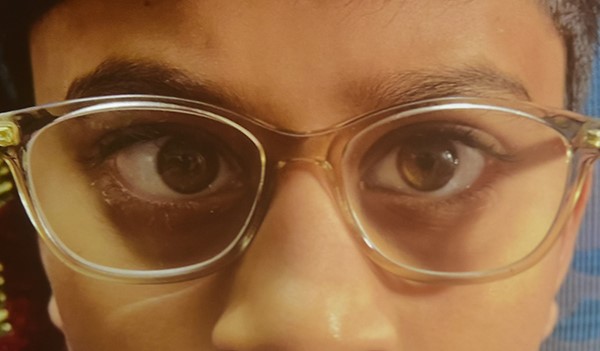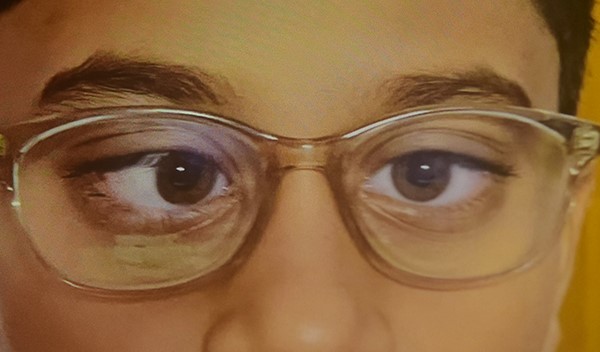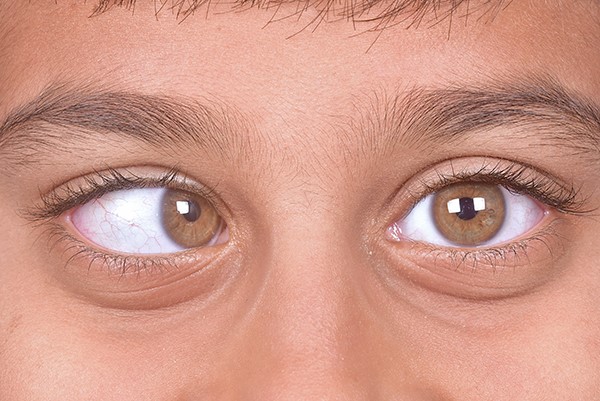Cyclic esotropia is a rare form of non-accommodative convergent strabismus which present as 24-hour period of straight eye position followed by 24 hours of large-angle esotropia1. Burian in 1958 described Cyclic esotropia for the first time in English literature2. Duke-Elder3 described the “Cyclic Squint” as a “rare and curious condition which invariably takes the form of a temporary esotropia.”
Etiopathogenesis/Theories
The etiology of this rare form of convergent strabismus is unknown. Possible theories behind the evolution of such a strabismus include progressive loss of compensation of a latent strabismus, change of a central clock mechanism, and incomplete cerebral dominance, with interhemispheric conflict1 spontaneously or may be precipitated by a trigger. The trigger can be traumatic brain injury, strabismus surgery, extracapsular cataract surgery, retinal detachment with scleral buckling, orbital surgery and ocular trauma4 . However, many cases have been associated with other eye diseases such as binocular optic atrophy or even with the menstrual cycle5, 6 .
Some authors have also suggested the dysregulation of central nervous system pathways involved in the biological clock affecting oculomotor control such as those of the hypothalamus or superior colliculus7 .
Clinical features
- The condition affects around one in every 3000–5000 patients with strabismus 5. Cyclic esotropia usually presents in children and most reports describe an onset at the age of 2–6years 8. Adult-onset cyclic strabismus has been linked to numerous factors though most adult cases have been attributed to eye surgery or traumatic brain injuryas mentioned above.
- Cyclicesotropiais characterized by a 24-hour period of being orthotropic followed by 24 hours of large-angleesotropia usually measuring 40-50 prism dioptre. During the ‘‘straight’’ interval (24-36 hours), patient may be free of diplopia and strabismus. In this period patient is orthotropic in all gazes and also have good stereoacuity.
- Can be associated with V or A pattern and occasionally with high AC/A ratio.
- No change in visual acuity, cycloplegic refraction, accommodation, pupil size and motility on esotropic and orthotropic days. However, stereopsis and fusional amplitudes will be defective on the esotropic days.

Family should keep a diary of photographs of each day with esotropia and orthotropia.


Figure 1 (A), (B) shows orthotropia in non strabismic days


Figure 2 (A), (B) shows esotropia in strabismic days
Work-Up of Patients with Cyclic Esotropia Includes
- History

- Atropine refraction
- Prism adaptation test
- Duration before any surgical intervention: to wait for 6-12 weeks from presentation and look for any variability of squint.- measurements on atleast 3 occasions -to record angle of deviation
Investigations
- Radiology - MRI brain with orbit with contrast to rule out any neurological deficits
- Blood workup to exclude thyroid disease and ocular myasthenia.
Differential Diagnosis
- Acquired esotropia of other etiology
- Refractive accommodative esotropia
- Non refractive accommodative esotropia with high AC/A ratio
- Partial accommodative esotropia
- Myasthenia gravis
Management:
Non Surgical:
- Spectacle prescription as deemed necessary for hyperopia/astigmatism.
- Prism glasses for small angle upto 15-16 PD can be considered
- Nonsurgical approaches by botulinum toxin injections in customized dosages to one or both medial rectus muscles may be an alternative way to effectively treat this rare squint9.
Surgical:
Treatment of cyclic strabismus depends on the surgical correction of the deviation present on the strabismus days; results are usually good, with no overcorrection or under correction on the previously “straight” days10.
Approaches are based on the maximum angle of deviation in the follow up visits with or without association of pattern strabismus.
Common procedures done are:
- Both eyes medial rectus recession
- Single eye medial rectus recession
- Both eyes medial rectus recession with inferior oblique weakening procedures in cases of associated inferior oblique overaction
Conclusion:
Cyclic esotropia is a very uncommon entity in strabismus which need detailed evaluation across weeks to come into the diagnosis. Appropriate clinical evaluation and investigation aids in early diagnosis and management.
Reference:
- Voide N, Presset C, Klainguti G, Kaeser PF. Nonsurgical treatment of cyclic esotropia. Journal of American Association for Pediatric Ophthalmology and Strabismus. 2015 Apr 1;19(2):196-8.
- Burian H. M. In:Strabismus Ophthalmic Symposium II.Allen J. H., editor. St Louis, Mo, USA: Mosby; 1958.
- Duke-Elder S. S. System of ophthalmology.Ocular Motility and Strabismus.1973;VI:612–615.
- ] Troost BT, Abel L, Noreika J, Genovese FM. Acquired cyclic esotropia in an adult. Am J Ophthalmol 1981;91: 8—13
- ] Frenkel RE, Brodsky MC, Spoor TC. Adult-onset cyclic esotropia and optic atrophy. J Clin Neuroophthalmol 1986;6: 27—30.
- Lee JY, Seok S, Oh SY. A case of cyclic esotropia with menstrual cycle. Acta Ophthalmol 2014;92:e246—7, http://dx.doi.org/ 10.1111/aos.12306 [Epub 2013 Nov 13
- ] Windsor CE, Berg EF. Circadian heterotropia. Am J Ophthalmol 1969;67:565—71
- Troost BT, Abel L, Noreika J, Genovese FM. Acquired cyclic esotropia in an adult. American Journal of Ophthalmology. 1981 Jan 1;91(1):8-13.
- Evereklioglu C, Horozoğlu F, Sener H, Polat OA. A Conservative Approach by Unilateral Maximal Single-Muscle Recession Surgery for the Treatment of Cyclic Esotropia. Case Reports in Ophthalmological Medicine. 2023 Jan 16;2023.
- Richter CP. Clock-mechanism esotropia in children: alternate-day squint. Johns Hopkins Med J 1968;122:218-23.

